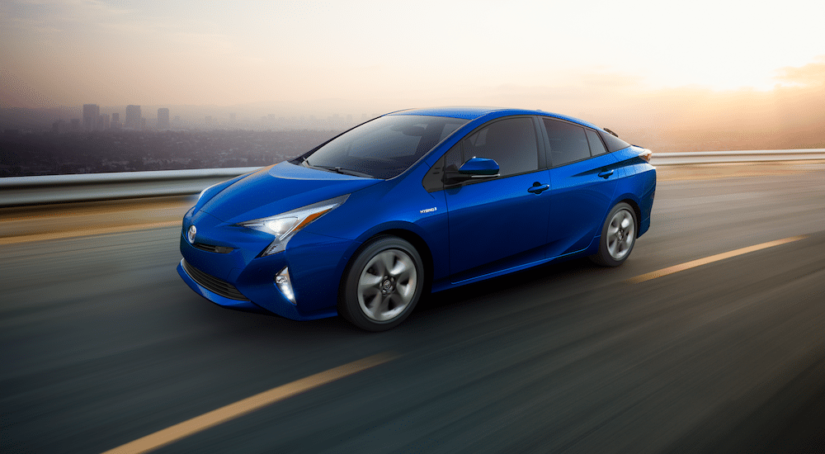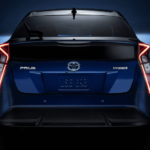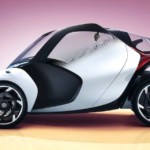As of 2018, the idea of a hybrid vehicle is easily understood and arguably enticing to many prospective car-buyers with an eye to sustainability. But cast your memory back twenty years, and it’s a different story. To the average layperson, a vehicle which subsidized a combustion engine with electricity seemed like a cool idea, but it felt less relatable. If asked during the summer of 1998, when fuel costs dropped below $1.00 / gallon, one might even suggest that it felt unnecessary. However, the Toyota Prius had already driven the first miles of the path leading to an automotive revolution.
Introduced to the Japanese market in 1997, the Prius’ worldwide introduction in 2001 ushered in a new mindset towards the role automakers would play in the new millennium. This would only be encouraged by the prevalence of eco-friendly legislation, as well as ever-increasing fuel costs, both of which would gain influence in the years to follow. At the time, the reception was lacking in warmth, outside of the eco-warrior community, and with good reason. Taking 13 seconds to sprint from 0 to 60 mph, it was anything but a confident performer. And by most accounts, the transition from electric to gas power during operation was anything but smooth. However, sales were bolstered by celebrity endorsements, and the Prius quickly picked up steam. Redesigns would follow almost immediately, paying off in sales which would double in 2004 and 2005, respectively. And by 2008, sales of the Prius would exceed 20,000 units per month!
Nowadays, there isn’t an automaker in the global marketplace who doesn’t offer a hybrid model or variant (and wisely so). In fact, most every automaker has either released, or is developing, an EV offering which represents the next stage of sustainable transport. Chalk it up to over saturation, but one can’t help but notice that (even with more impressive stats) some of the offerings seem less impactful than the Prius. So, in case we’re over-crediting it based on its pioneering role, let’s take a look at 6 reasons why today’s Toyota Prius still rules the roost in terms of hybrids.
1. Ever-Improving Efficiency
The fourth-generation Prius exists as a testament to continual improvement. Lighter and more aerodynamic, it achieved a significant weight reduction due to lower-weight components and materials. With one of the lowest (.24) drag coefficients in current production passenger cars, the Prius stands as a testament to aerodynamic design sensibility. Reduction in the size of the battery has allowed for the relocation of that battery, creating more cargo space overall. And the latest incarnation of the Hybrid Synergy Drive, pairs a 1.8-liter four-cylinder with a continuously variable transmission to offer improved fuel efficiency, with overall design delivering an impressive 40% thermal efficiency rating.
2. Design and Execution
Okay, joke references aside, Toyota’s New Global Architecture might provide a strong aesthetic but, more importantly, it creates a more engaging driving experience thanks to a high-strength body, lower center of gravity and evolved suspension. From high-tensile steel components, to the use of inspired fastening methods, design and assembly of the Prius still speaks to the future two decades down the line. But the double-wishbone multi-link rear suspension serves as a powerful reminder that the Prius has some upscale DNA, empowering it with both agility and an unparalleled ride quality.
3. Information and Media
Expectations have evolved significantly, especially within the last decade and the Prius does more than just meet those expectations. At the base level, the Prius One, Two and Two Eco sport the Entune audio system with the multimedia bundle of the same name. The Bluetooth-enabled infotainment system is built around a 6.1-inch touchscreen interface with backup camera, and multi-input sound system. Continue up the trim ladder, and there are countless upgrades to HD and satellite entertainment, navigation capabilities and the immersive nature of the auditory experience. Wireless smartphone charging goes a long way towards convenience, as well.
But the dynamic information display is worth pointing out as well. Denoting drive mode, it changes color to ensure driver awareness at all times, and provides a wealth of information designed to maximize the Prius experience.
4. Push-Button Parking
Assistive parking features are more prevalent than ever, but Toyota’s Intelligent Clearance Sonar capabilities empowers one of the easiest parking features on the road today. Pulling in, pulling out, backing in or parallel parking maneuvers can be done with ease (and with the push of a button).
5. Quiet Running
We mentioned the aerodynamic nature of the Prius, but the entire design aids in the reduction of noise inside of the cabin. Combining a specially laminated windshield with sound absorbers built into the dashboard, noise intrusion is significantly lessened on the front-end. The same approach is modified for equal success on the doors, with silencing materials used throughout the cabin to create a relaxing and peaceful environment.
6. Warranty
And, as with any vehicle worthy of consideration, a new Prius comes with a thorough warranty package. A 36-month/30,000 mile basic warranty covers all components outside of normal wear and additional 60-month warranties (without mileage limitation) can protect against corrosion. A separate 8-year/100,000 mile coverage is provided on the Prius’ hybrid components. Factor in the standard ToyotaCare package, and its safe to say that Prius inspires confidence.
Is the Prius Right for You?
Ultimately, only you can decide. While and increased number of sustainable offerings are served up each model year, it’s important to note that the Prius is more than just a ‘innovative pioneer’. It is clear that Toyota has never taken a moment to rest on their laurels, and the continual evolution of the Prius over the last two decades has gone a long a way to prove that it’s even more enticing today than it was when first introduced as a fresh-faced game changer for the 21st century car-buyer.



